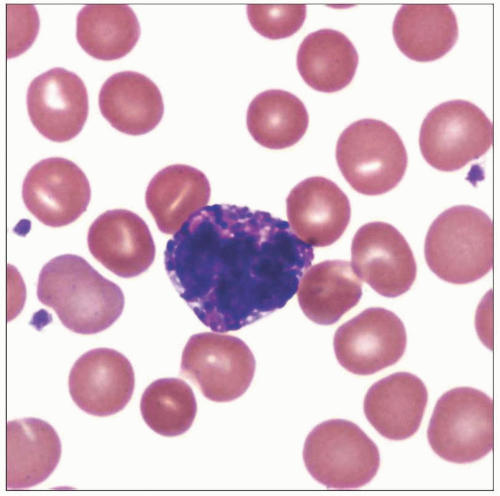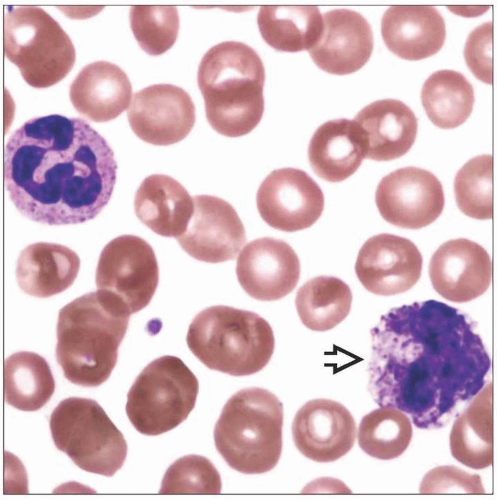Basophilia
Kathryn Foucar, MD
Key Facts
Terminology
Absolute basophil count exceeding 0.2 × 109/L
Etiology/Pathogenesis
Secondary basophilia linked to allergic disorders and chronic inflammation
Clinical Issues
Degree of basophilia modest in most secondary basophilias
Reactive, secondary basophilia is rare in clinical practice
Microscopic Pathology
Basophil degranulation may be present
Basophilic myelocyte 1st recognizable basophil precursor
Top Differential Diagnoses
Myeloproliferative neoplasm with absolute basophilia
TERMINOLOGY
Definitions
Absolute basophil count exceeding 0.2 × 109/L
Basophil recognized by its unique, dark, purple secondary granules
Granules contain heparin, histamine, eosinophil chemotactic factor, and slow-reacting substance of anaphylaxis
ETIOLOGY/PATHOGENESIS
Pathophysiology
Linked to interleukin (IL)-3, IL-5, and granulocyte-monocyte-colony stimulating factor (GM-CSF)
Basophils derived from common granulocytic progenitor cells
Multifactorial Causes
Causes of secondary basophilia generally linked to allergic/hypersensitivity disorders or chronic inflammatory conditions
Stay updated, free articles. Join our Telegram channel

Full access? Get Clinical Tree





